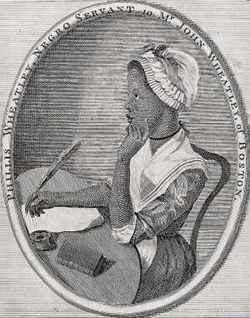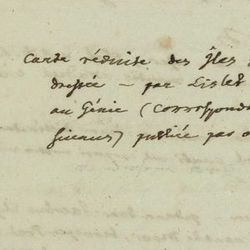|
Historical background
Manuscript list
Phillis Wheatley (ca. 1753–1784). Frontispiece from Poems on various subjects, religious and moral. By Phillis Wheatley. London 1773. Wheatley was the first published African-American female poet. Blumenbach mentions her in his Beyträge zur Naturgeschichte, vol. 1 (2. ed. 1806), p. 91. Click to enlarge. |
|
| Reports about Blumenbach’s “African library” |
|
In his “Éloge” on Blumenbach, Marie Jean-Pierre Flourens reported that Blumenbach “avait une bibliothèque toute composée de livres écrit par des nègres.” (Éloge historique de Jean-Frédéric Blumenbach, un des huit associeés étrangers de l’Académie. Lu dans la séance publique du 26 avril 1847. Paris: Claye, 1847, p. 13; digitised version). At least in his lectures, Blumenbach also seems to have mentionned such a “library”, cf. the reproduction of a note of an English listener in The London Medical Gazette 1 (1827/1828), p. 72 (digitised version): “Blumenbach gives us a most entertaining account of a little library which he possesses of works written by Negroes, […].” (for the origin of the notes see ibid. p. 47). Already in 1829 this short note was quoted almost literally in Freedom’s Journal, the first journal in the USA published by Afro-Americans (January 24, 1829, p. 337; with “striking” instead of “entertaining”; digitised version). Modern research also speaks of such a “library” (cf. z. B. Schiebinger, Londa: Nature’s body. Boston: Beacon Press, 1993, p. 190f.). |
| The term “library” must probably be understood in the limited sense of a smaller collection of books (cf. the title of Blumenbachs review journal Medicinische Bibliothek. It contained works by non-European authors, mostly from Africa and trained in Europe or the USA. Blumenbach mentions publications by three authors of African origin for the first time in 1787, still without a hint that he himself collected these works (“Einige naturhistorische Bemerkungen bey Gelegenheit einer Schweizerreise”, in: Magazin für das Neueste aus der Physik und Naturgeschichte vol. 4, 3. Stück (1787), p. 1–12, here p. 9; digitised version). In an extended version of this text in the first volume of the Beyträge zur Naturgeschichte (1790), pp. 95–118 (digital version), Blumenbach mentions seven writers of African origin by name (and four others without giving their names) and declares that he owns works by four of them (and had the other works “in his hands” i.e. he had borrowed copies). In the second edition of the first volume of the Beyträge (1806; digitised version) Blumenbach adds two more names to this list, again with the remark that he also owns works by these authors and by other authors of African origin not mentioned by name. |
|
|


